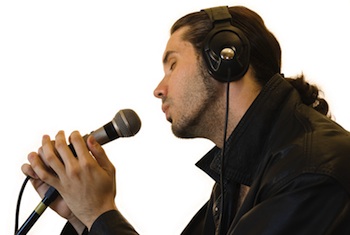If your song melodies sound like random, aimless wanderings, here are some ideas for curing your problems.
_____________
Download “The Essential Secrets of Songwriting” 6-eBook Bundle, and solve your songwriting problems TODAY.
_____________
 Take a look at any successful song melody from any era, and you’ll see almost universally that it has the following characteristics:
Take a look at any successful song melody from any era, and you’ll see almost universally that it has the following characteristics:
- A general sense of direction that moves upward as it progresses from the start to the end of the chorus.
- Mostly stepwise motion (i.e., it moves from one letter-name to an adjacent one.
- Occasional leaps, mostly involving specific words in the lyric that contain a great deal of emotional value.
Let’s look at those qualities one by one. First, when done well, a song melody’s greatest feature is the sense that it is moving in a particular direction. In such melodies we’re aware of a melodic goal. A couple of posts ago I talked about Taylor Swift’s new song, “We Are Never Ever Getting Back Together”, and noted this characteristic as being particularly obvious in the chorus. All lines either started or ended on the tonic note, and that tonic note was a strong and clear goal for the chorus melody.
So that general sense of direction usually comes from choosing a note toward which your melody will move. If it’s a verse melody, you’ll want to avoid the tonic note as that goal, and choose either the dominant (the 5th note) or the mediant (the 3rd) as its goal.
Second, good melodies tend to be constructed to move mostly in stepwise motion. That means that if your first note is an F, the next one will be one step (or half-step) away, either higher (F# or G) or lower (either E or Eb). And it will continue that motion for at least a few notes.
In other words, a good melody provides a recognizable line. If your melody is too disjunct (i.e., too many melodic leaps), a line is harder to define, the song is harder to sing, and it’s tougher for an audience to remember it after it’s done.
And third, good melodies need melodic leaps once in a while. A melodic leap achieves a couple of things: 1) it creates moments of interest and possibly surprise, enough to keep the audience focused; and 2) it provides a “vehicle” for some of your more emotional words within your lyric. Providing a leap (often an upward one) on an emotional word helps draw attention to that word, and inject power into your lyric.
In that sense, melody and lyric are always strong partners in the songwriting process. You should feel that modifying your melody after you’ve written it will help your lyric work better; it’s a normal activity for creating a good song.
____________
PURCHASE and DOWNLOAD the e-books for your laptop/desktop











Pingback: Melodic Discovery through Autotuned Oratory | Creative Ideas for Starving Artists
Hi Gary..wish you a very happy new year!! :-). A quick question on this post (My first question to you for this year)
While using step wise melodic motion within a diatonic scale, is it okay to move in parts consisting of different notes/pitches? Example: Within a C Major scale:
First melodic phrase: C – D -E .
Second melodic phrase: E – F – G.
Thanks,
SM
Yes, and in fact, that’s a very common way to construct melodies. Songwriters will often take a short melodic phrase and do one of two things: 1) Repeat it exactly, with different chords underneath (like Neil Young’s “Southern Man“), or 2) Move the melody to a different note, but keep the same shape as the original melody (like Train’s “50 Ways To Say Goodbye“)
-Gary
Got it!..So, the second example probably indicates melodic sequences(one of your posts). Using the same example , is it also correct/good, to start the the next melodic phrase on a totally different note(not in sequence) moving in step wise motion .. say : B -C.
In this case, would it be considered as a melodic leap? or treated as different melody not connected/related to the previous one?
Pingback: Contouring a Melody -